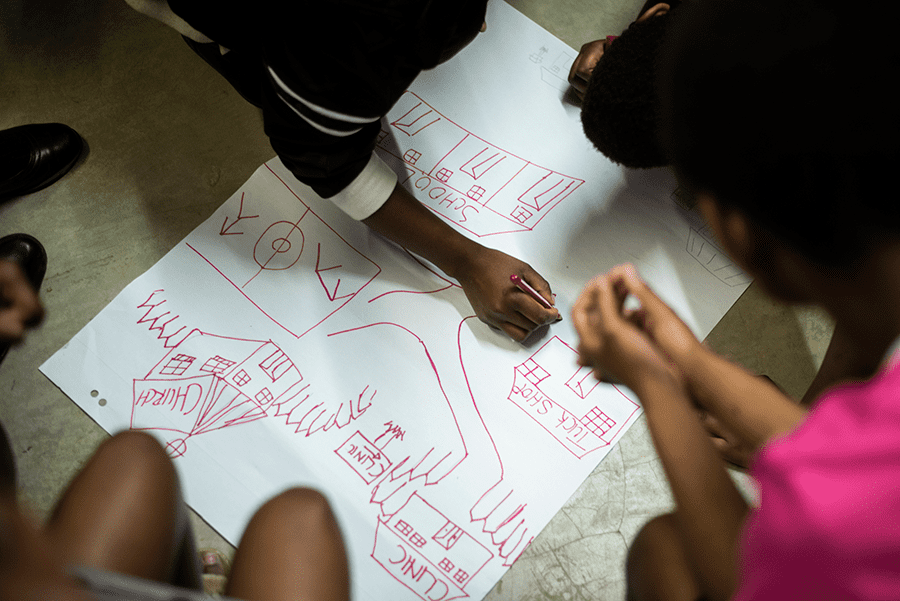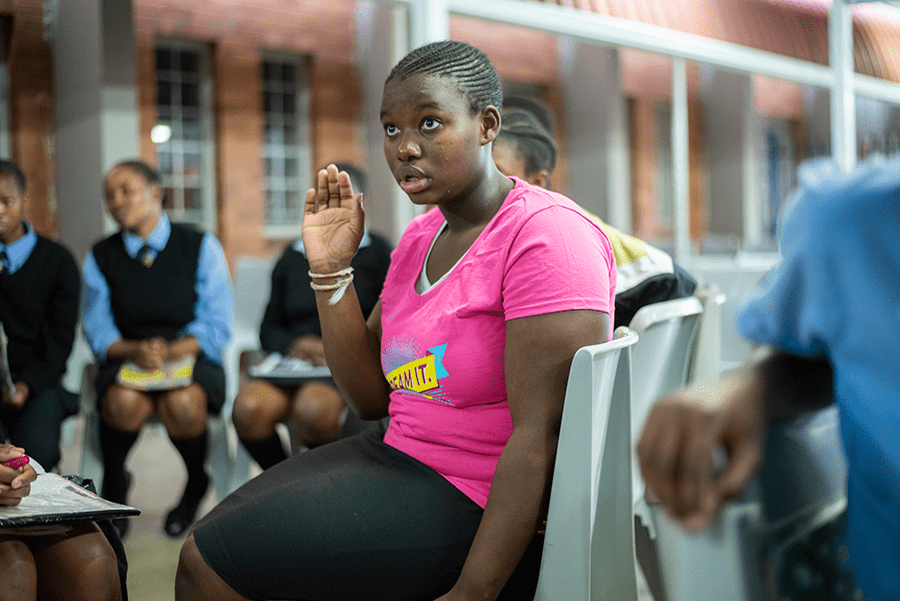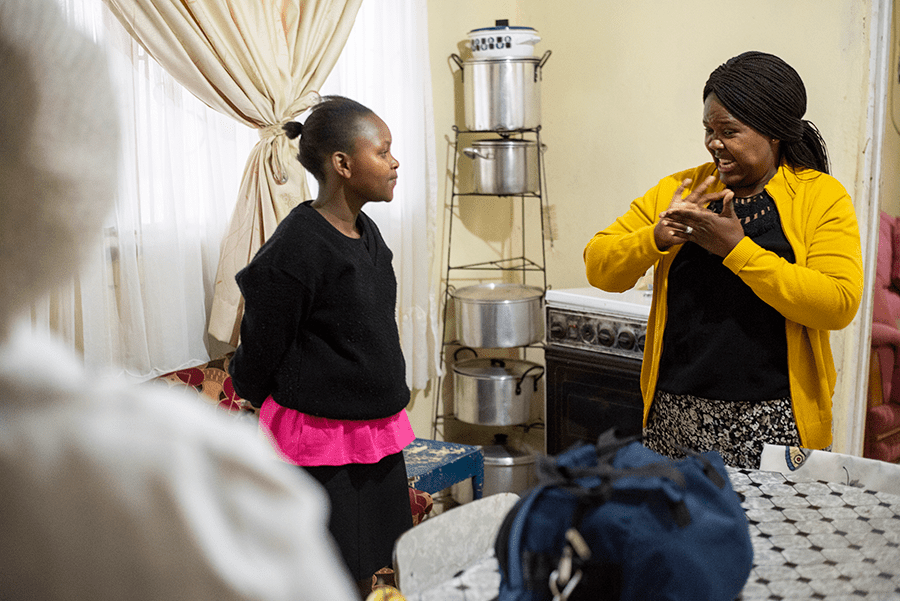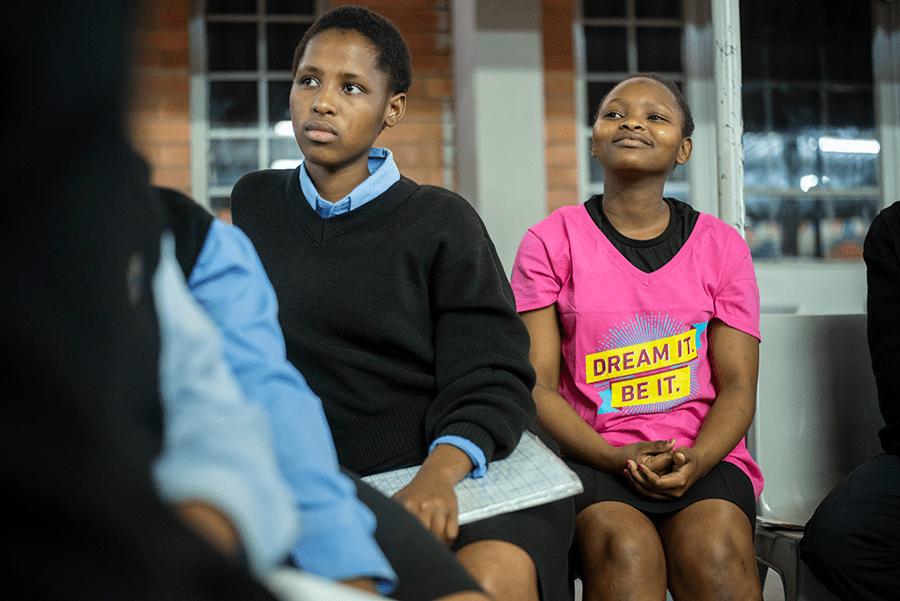This website uses cookies so that we can provide you with the best user experience possible. Cookie information is stored in your browser and performs functions such as recognizing you when you return to our website and helping our team to understand which sections of the website you find most interesting and useful.
People with disabilities are often at higher risk of exposure to HIV. Despite the relationship between disability and HIV vulnerability, persons with disabilities are often excluded from HIV education, prevention, and support services because of assumptions that they are not sexually active or do not engage in other risk behaviors. In South Africa, the DREAMS Innovation Challenge (DREAMS-IC), which is funded by PEPFAR and managed by JSI, supports the Community Media Trust’s (CMT) innovative use of peer support to reduce HIV vulnerability and risk among adolescent girls with disabilities and encourage them to stay in school.
Sthabile, 26
CMT’s project, Driving Program Resources to Large, Underserved Segments at Risk of HIV: Migrant & Disabled Girls, combines mentorship, peer support, advocacy, and awareness raising to support disabled girls and young women through weekly Girls Club sessions. There, girls and young women share their experiences and support each other.
Sthabile, has difficulty seeing, a common disability associated with albinism. This genetic disorder results in the lack of color in the skin, hair, and eyes. In many African countries, people with albinism are stigmatized, discriminated against and sometimes hunted for body parts. Sthabile heard about CMT’s DREAMS-IC program and decided to join. She attended the sessions where she built protective assets through learning about health, finance, and social skills. For example, she was taught about HIV and how to prevent infection, how to be a good friend, and how to save money.
The weekly Girls Club sessions help girls develop the knowledge and skills to be active agents in managing and improving their own lives, promoting healthy and health-seeking behavior, and teaching them basic human rights. These are pathways to empowerment.
Sthabile, 26
The girls who participate in Girls Club are matched with local mentors who have completed secondary school and can demonstrate the value in completing one’s education. After participating in the program for 1 year, Sthabile was selected to be a mentor. She is mentoring 18 disabled adolescent girls aged 11 to 18.
Sthabile shares, “Because of DREAMS, I now recognize that there are opportunities for people with disability, and this is what I want to teach my mentees. They can be what they want to be.”
Nokwanda, 15
Nokwanda is studying at the Kwa Thintwa Secondary School for the Deaf and is one of Sthabile’s mentees. Nokwanda hopes that one day she’ll be able to attend university and have a good job. However, as a person with a disability, she often feels that she is excluded from important conversations and lacks the knowledge and skills to overcome the challenges of adulthood. She was happy when the DREAMS-IC program was offered at her school because now, she is having these important conversations.
“My favorite things I have learned so far is how to report cases of abuse and how to save and manage my money better,” says Nokwanda.
Nozipho is 16 years old and attends Kwa Thintwa Secondary School for the Deaf with Nokwanda. Nozipho also enjoys attending the sessions offered by CMT and enjoys having Sthabile as a mentor. She finds the Girls Club very interesting and enjoys learning how to manage her finances and health.
Because of Sthabile and the information she has learned in the Girl Clubs, Nozipho knows that there are opportunities in South Africa for her regardless of her disability. Nozipho’s dream is to learn English and attend university.
Patricia works as an interpreter at the Kwa Thintwa Secondary School for the Deaf. During the DREAMS-IC sessions, she helps Sthabile communicate with her mentees.
Over the life of the project, more than 700 adolescent girls and young women with disabilities have graduated from CMT’s program, as well as, over 2,200 girls from immigrant families. The impact of the program is reflected through the change in knowledge, attitudes and practices (KAP) amongst the adolescent girls participating in Girls Clubs. CMT conducted a before and after KAP survey to determine project impact. At baseline, less than a quarter (21%) of disabled girls were able to correctly answer all the questions related to major misconceptions about HIV transmission. After completing the program, this score moved to 83% showing a significant change in knowledge and attitudes towards HIV. Additionally, there was a 50% to 89% increase in the number of disabled girls who reported that they had a feasible safety plan to manage risky situations.
[1] https://www.un.org/development/desa/disabilities/issues/disability-and-hivaids.html
[2] https://www.un.org/development/desa/disabilities/issues/disability-and-hivaids.html
Photo credit: Lambert Coleman / Hans Lucas






